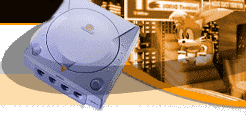School's... out for... summer! - Review By Vash T. Stampede

If videogames and anim� have taught American gamers anything about Japanese culture, they have taught that inter-high school rivalries often erupt into violent martial arts confrontations, wheret 15- and 16-year-old schoolgirls can and will almost always do gravity-defying roundhouse kicks in order to defeat their vastly larger foes while simultaneously flashing their panties. Capcom's Project Justice continues to pound home these important lessons.
Set in a mythical Japan where high school is apparently so important that it figures into multiple plans for world domination, the game is inhabited by all kinds of freakish high school students and their warped, eccentric teachers. Project Justice (called Moeru! Justice Gakuen in Japan) is the arcade sequel to Capcom's equally-strangely-named high school fighting game Rival Schools: United by Fate. Whereas Rival Schools appeared first in the arcades on Capcom's PlayStation-derived arcade board and then later made the hop-skip-and-a-jump over to the PS, Project Justice was created for the Dreamcast-based Naomi board and released simultaneously in arcades and on Dreamcast in Japan.

An ominous moment in an otherwise mostly silly fighting game. |
Project Justice follows an eclectic group of students and teachers as they attempt to figure out who is setting them against one another in an effort to seize control of all high schools and (by logical extension) Japan. Players choose groups of three characters, either by selecting the school they wish to represent in the Story Mode, or selecting three particular characters they like in a "Free" mode, which has no set story associated with it. Matches are best two-out-of-three, and players only select one character to fight with in each round (unlike Capcom's "VS." series, where all selected characters can be swapped in and out at will). The other characters serve in a support capacity for the main character, providing power ups or participating in powerful team-up attacks when summoned, but generally staying out of the fray. The player can only opt to switch out his main combatant between rounds.
The Good
Switching characters is something with which players will definitely want to experiment, too. One of the strengths of Capcom fighters (maybe of Capcom games in general) has always been the integrity of their character designs. Whether it's Jill Valentine in Resident Evil or Ryu and Chun-li in Street Fighter II, Capcom's ability to create fun, likeable characters that fit the setting in which they exist is second-to-none. Capcom also has a proven ability create wacky, offbeat characters, and the characters in Project Justice certainly fit into this camp. Starting with the premise of high school students and teachers, Capcom has populated Project Justice with a bizarre assortment of bullies, cheerleaders, and members of various athletic and extra-curricular clubs. Sending characters like the school newspaper photographer and the swim champ into battle against one another makes for interesting and highly amusing battles, especially given the outlandish (yet somehow appropriate) moves possessed by each character. There is something disturbingly satisfying about beaning an opponent with tennis balls lobbed by the adorably cute Momo or batting an opponent out of the park with baseball fanatic Shoma. Project Justice is great fun in a group, since it is almost as much fun to watch as it is to play. Along the way, players will also unlock a fair number of hidden characters, giving the game some replay value outside the multiplayer party arena.

The assists really add to the strategy in Project Justice. |
The fighting system in Project Justice is classic Capcom, which most people would agree is a good thing. Anyone acclimated to the basic movements Capcom has used since the early days of Street Fighter will have no trouble picking up Project Justice and pulling off moves and combos. Project Justice uses four basic buttons: Weak Punch, Strong Punch, Weak Kick, and Strong Kick. Special moves sometimes require pressing two buttons at the same time, and purists will most certainly prefer a joystick, although the game plays quite well on the gamepad (with the two shoulder buttons drafted into service as "dual press" buttons that would be hard to reach with a standard grip on the pad). Although some players may be caught off-guard that they can't use all their characters in a single round, this is actually one of the most interesting elements of strategy when playing the game. Often times, it is beneficial for the player to choose a character he has no intention of playing, simply to gain the advantages that character has as a support character. The nature of the fighting system allows for those sorts of strategic decisions.
The fighting system is very much like that of Marvel vs. Capcom 2 in the way the use of partners adds to the strategy and depth of the fighting engine. In fact, the game really plays like a 3D MvC2, just without the ability to call in your partners. You can cancel opponents attacks by striking them at the right time as well as launch all kinds of crazy air comboes in the air. There are more or less millions of comboes and strategies in Project Justice, making it an actual worthwhile fighting game even though the theme and setting doesn't exactly take itself seriously. Although a handful of characters almost border on "cheap" with seemingly infinite juggle ability, any player can avoid such traps with just a bit of practice and skill.
Graphics in Project Justice are something of a mixed bag, with fairly simplistic character models and relatively sparse backgrounds. Still, the characters are very amusingly animated, and some occasional (intentional) quirks in the backgrounds (like being able to bounce opponents of the ceiling in the classroom level) help bump the graphics into the "plus" column.
Next: More Good, The Bad, and The Final Word


